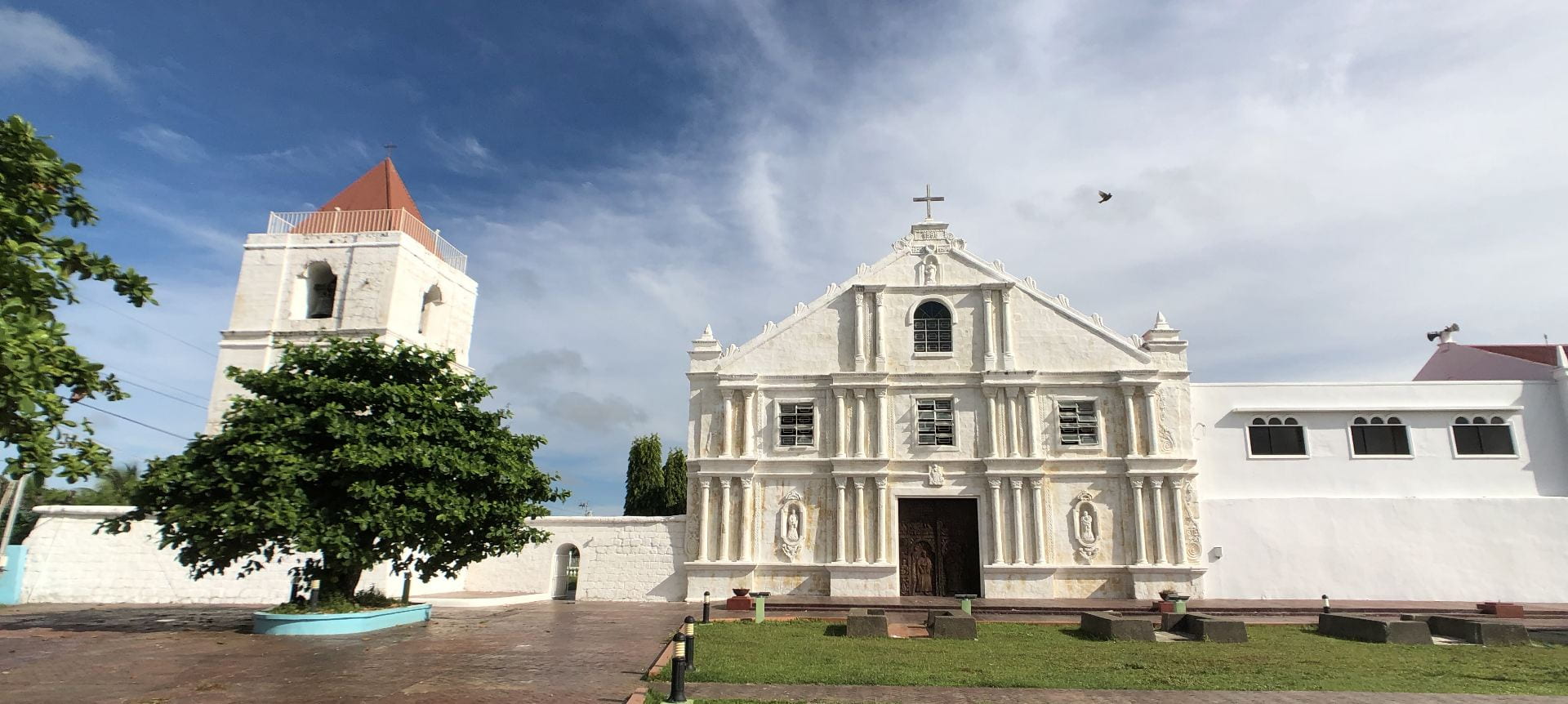Capturing ‘Content in the Field’: Philippines

image: La Inmaculada Concepcion Parish Church in Guiuan (Eastern Samar), Philippines
Prepared by: Grace Barrand & Lia Sumichan, Masters Students of the Grimwade Centre for Cultural Materials Conservation
Facilitators: Dr. Nicole Tse, the Grimwade Centre, Robert Balarbar, National Museum Philippines and Guy Custodio, Consultant Artist Restorer
In November 2013, Super Typhoon Haiyan (also internationally known as Typhoon Yolanda) devastated the provinces of Leyte and Samar in the Philippines. The typhoon destroyed numerous structures across the affected areas, including La Inmaculada Concepcion Parish Church in Guiuan (Eastern Samar), which housed culturally significant ceiling paintings, retablos and extensive shell ornamentation from the Guiuan ocean. Due to these significant features, prior to the disaster the Church was declared a National Cultural Treasure under the Philippine Registry of Cultural Properties in 2001, meaning that the heritage management of the Church was under the jurisdiction of the National Museum of the Philippines. The interdisciplinary team of heritage professionals from the National Museum together with local artists and parish community, were tasked with the restoration and conservation of the moveable and immoveable heritage of the Church. Funds for the restoration came from the Philippine government and a grant from the United States Ambassador’s Fund for Culture. This project began in 2014 and continued until July 2019.
As part of the Content in the Field subject led by Dr Nicole Tse, students from the University of Melbourne Grimwade Centre for Cultural Materials Conservation traveled to Guiuan in July 2019 to support the conservation management of the Church. Across the week, students collaborated with the National Museum and parish community to host a range of preservation related workshops for the Church community in themes such as risk management, dry cleaning techniques and paintings conservation. Take a look at the Behind the Scenes video to learn more about the workshops and its participants.
Students were able to contribute by sharing knowledge and facilitating discussion, while also learning about the value and challenges associated with undertaking cross-cultural, community-based conservation. The aim was to work as a group to develop guidelines with and for the community around ongoing maintenance of the Church and its collection now that the site had been largely reconstructed. This opened a space to discuss some of the underlying themes that ran throughout the conservation works, such as how decisions about restoration and salvage were made, why the collection is nationally significant, and the importance of maintaining the Church as a place of worship while also preserving those significant features that make it a National Cultural Treasure.
Some of the participants were members of the Parish Youth Ministry of La Inmaculada Concepcion Church in Guiuan. Throughout the week, this youth group actively engaged with the workshops, demonstrated a sincere connection with the cultural heritage of the Church and were leaders in discussion around the importance of conservation and what that conservation should look like in the context of La Inmaculada Concepcion. We were inspired by the engagement of the youth group, which highlighted the importance of passing on knowledge to younger generations to ensure the conservation of values in a living heritage community. But that’s enough from us – the Parish Youth Ministry want to tell you about the Church themselves.
Prepared by:
Grace Barrand & Lia Sumichan
Facilitators:
Dr. Nicole Tse, Robert Balarbar and Guy Custodio for facilitating the week of workshops for students and participants
Acknowledgements:
Father Edwin Laneuvo and Parishioners from the La Inmaculada Concepcion Church in Guiuan, Philippines; Dr Ana Labrador, Assistant Director, and Dr Owis Bolunia, Engineer Jai Altillero, Robert Balarbar and Camille Calanno, staff from the National Museum of the Philippines; and the Grimwade Centre for Cultural Materials Conservation, Faculty of Arts, the University of Melbourne.